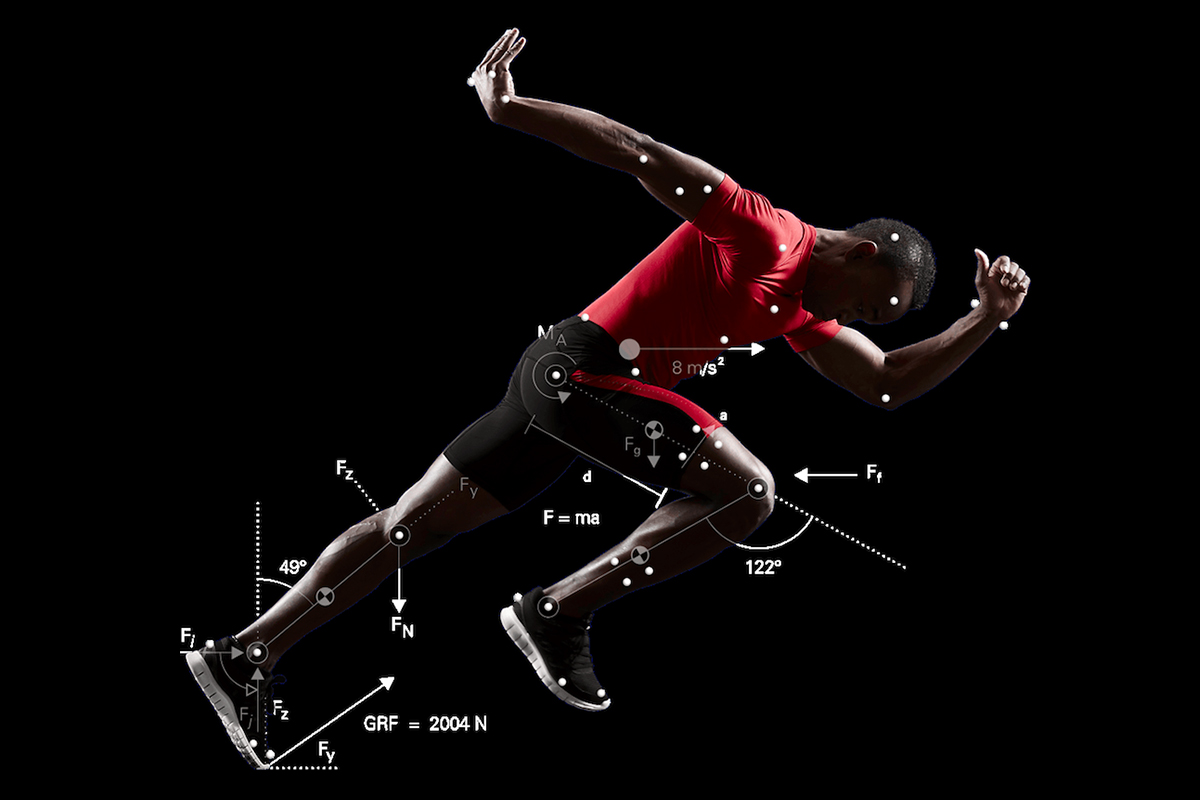Quiz 3 kinesiology
1/27
There's no tags or description
Looks like no tags are added yet.
Name | Mastery | Learn | Test | Matching | Spaced |
|---|
No study sessions yet.
28 Terms

Biomechanics
examines the internal and external forces acting on the human body and the effects produced by these forces
Quantitative Analysis
measurement of variables to optimize or maximize performance *recording a certain # to track performance (measurable)
Qualitative Analysis
obtaining visual or aural information to asses performance. *tracks what motion produced looks like (visual)
Acceleration
rate of change of velocity
velocity
displacement per unit of time
mass
the measure of how much matter an object has
weight
the measure of force of gravity, which is measured in newtons
balance
the base of support and location of the center of mass is manipulated
what are the types of motion?
general motion, linear motion, angular motion
what are the causes of motion?
force, constant velocity, linear motion, & angular motion
what are the three classes of levers?
1st: First Class
2nd: Second Class
3rd: Third Class
best way to maximize jump height exercise
increase the force of takeoff by strengthening the legs by doing plyometric exercises to improve explosive power
factor(s) important to athletic performance?
-balance
-technique
-strength
-speed
-flexibility
-endurance
-coordination
-agility
how can we increase stability?
-increase base of support (feet further apart)
-lower center of mass (bend knees)
-keep center of mass within base of support (don’t lean to far)
-increase body mass/ inertia
-increase friction with the ground (don’t slip)
how can we analyze skill?
-break it into phases
-observe
-compare
-identify errors
-correct errors (feedback)
how can we increase stability?
how can we analyze a skill?
describe the factors that affect development of movement intelligence
-starting at a young age
-learning time
-instructor
-equipment
-progression
Cognitive stage (1st stage)
when a task or skill is first introduced
Associative stage (2nd stage)
focused on preforming and refine the skill
Autonomous stage (3rd stage)
performance/ skill is automatic and very proficient
stages of motor learning
-Cognitive stage (1st)
-Associative stage (2nd)
-Autonomous stage (3rd)
Describe factors that control effectiveness of learning
-readines
-motivation
-reinforcement
-individual diferences
-learning environment
-transfer of learning
intrinsic feedback
information provided as a natural consequence of preforming an action
(ex:you feel tired after a workout) (your own body tell you)
extrinsic feedback
information provided to learner by somebody else like a coach or teacher
(ex: someone scoring you, someone correcting you, being told how you did)
knowledge of performance
feedback about the quality (HOW the skill was preformed)
ex: arm extension when hitting the tennis ball
knowledge of results
feedback about the outcome (what happened after the movement)
ex: watching the tennis ball land in the opponent’s court
progression
gradually increasing the difficulty or intensity of training/skill so the body continues to adapt and improve